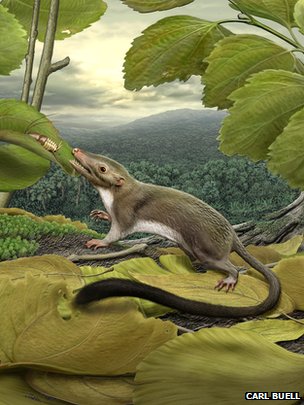Weekly Science Picks


It’s been an interesting week in the world of science, with the predominant story focused on just who our mammalian ancestor might be. Everyone has been covering this, the BBC, the New York Times and national Geographic. But some other newsworthy notes include new developments on graphene, a discussion on just how big the universe really is, and biodiversity 10,047 meters below the sea’s surface.
Scientists are on a never ending quest to pinpoint exactly where we came from and this past week may have shown some significant process in that endeavor. And the story reported on by BBC below highlights some fascinating elements in the work of phylogeny. One of the most intriguing points of the story is in the tools scientists now have at their disposal for evolutionary research – MorphoBank.
Earliest placental mammal ancestor pinpointed by Jason Palmer
But the new work tackles the question of placental mammals in unprecedented detail, taking six years to develop a database of physical and genetic data some 10 times larger than any used previously – and taking a decidedly modern take on it.
Exfoliation…and we’re not talking about ladies skin cleansing here. This next piece from our very own Markus Hammonds highlights exciting new research for the use of graphene in making high grade electronics.
Could the next generation of electronics be made with graphene? by Markus Hammonds
By using a process called exfoliation, the layers in this material are a mere 11 nm thick, and electrons are able to move freely through it without any scattering from impurities in the material (one of the main limiting factors in any system of electronics). Free from such obstructions, electroncs can flow through this new material at high speeds.
Will we ever get our heads around how big the universe is? Astronomer Pete Edwards of the University of Durham seems to think not. See what you think in this video featured on The Guardian.
How big is the universe…compared to a grain of sand?
10,000 galaxies in a patch of sky the size of a grain of sand held at arm’s length…
Is future shock real? Is it over? It’s all relative, I think, but makes for an interesting story about how we look at our past, present and future.
How can you tell if you are suffering from Future Shock? by Charlie Jane Anders
Instead of wondering where things are going, says Rushkoff, people have started to wonder about where things are right now. Around the time of the dotcom era, people became obsessed with speculating about the present. ” I think we have moved out of linear time and the historic sensibility altogether,” says Rushkoff, “and our current stress stems more from the simultaneity and instantaneity of the digital media environment, as well as the loss of narrative and other connections to organic time.”
 Follow
Follow